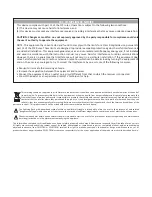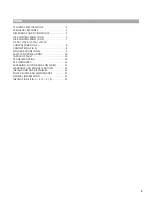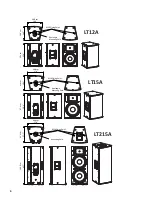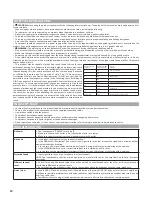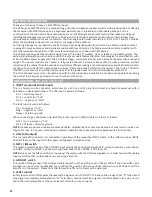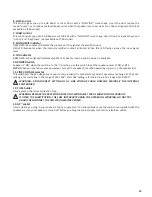
1
2
GENERAL INFORMATION
Thank you for having chosen a
CELECTRON
product.
The
L
T
Series by
CELECTRON
is an extended range of ac ve and passive speaker systems with plywood cabinet o
ff
ering
the renowned
CELECTRON
sound and a high-level performance in a reliable and a
ff
ordable package. For the
construc on of the cabinets we have used plywood, a very lightweight and durable material that makes moving and
installing these speakers very quick and easy. Strong, an -scratch paint and steel grilles with an internal foam layer
provide proper protec on for years of service. The dual-angle pole holder featured in LT8, LT10, LT12 and LT15 models
o
ff
ers the possibility to obtain a more uniform coverage of the audience.
For the high frequency reproduc on of
LT
Series we have designed wide-dispersion horns, able to provide constant
coverage for large audiences and detailed response with low distor on. The high-excursion woofers, together with
carefully tuned vented cabinets, o
ff
ers an extended response with deep and ght basses.
The
LT
Series includes 6 ac ve models ranging from 6.5” to dual 15” woofers, plus 1 sate subwoofer system. The
extremely lightweight power modules used in the ac ve models feature the latest technologies for ampli
fi
ca on, such
as Switch Mode Power Supply and CLASS D output stages, which provides a massive amount of power with a reduced
weight. The power modules are hosted in fully-sealed die-cast aluminium boxes that provides protec on, perfect
insula on of the cabinet from the outside and extremely e
ffi
cient cooling. Each module includes a sophis cated pre-amp
sec on with up to 24 dB/oct. phase aligned crossover
fi
lters and ac ve EQ
fi
lters for the system’s
fi
ne tuning. The DUAL
LIMITER circuit ensures an undistorted sound even at the loudest level and a total loudspeaker protec on.
The LT loudspeaker systems can be combined with the SW subwoofers: available in 5 models and capable of providing
the perfect low frequency extension for each model of the series.
INSTRUCTIONS (FIG. 1 / 2 / 3 / 4 / 5)
1. INPUT (combo XLR-JACK input)
This is a female combo connector, which accepts a XLR or a JACK plug from almost any type of equipment with a
balanced or unbalanced outputs. The XLR input is wired as follows:
Pin 1 = shield or ground
Pin 2 = + posi ve or "hot"
Pin 3 = - nega ve or "cold"
The JACK input is wired as follows:
Tip = + posi ve or "hot"
Ring = - nega ve or "cold"
Sleeve = shield or ground
When connec ng an unbalanced signal (RCA pin jack inputs on LT6A model), wire them as follows:
Pin2 / Tip = + posi ve or "hot"
Pin 1-3 / Sleeve = shield or ground
NOTE:
whenever possible, use always balanced cables. Unbalanced lines may also be used but may result in noise over
long cable runs. In any case, avoid using a balanced cable for one channel and an unbalanced one for the other.
2. LINK (XLR output)
This is a male XLR connector, it is connected in parallel with the respec ve INPUT socket, so the LINK is wired as INPUT.
Connect these to the inputs of other powered speakers to make an array.
3. MIC / LINE switch
This switch adjusts the gain of the LINE/MIC input varying the sensi vity between MIC, suited to connect a microphone,
and LINE, suited to connect a device with high level output like a MIXER, a CD player etc.
NOTE:
do not use the MIC sensi vity to "pump up" the volume with the LINE level equipment, in order to avoid the analog
input satura on that could produce very annoying distor on.
4. GND LIFT switch
This switch li the ground of the balanced audio inputs from the earth-ground of the ampli
fi
er. If you have HUM noise
problem on one or more loudspeaker try to change the posi on of these switches (o en all up or all down for all the
ampli
fi
ers in the system). Please note that to have an e
ff
ect all cables must be balanced.
5. LEVEL control
Rotary level control: it a enuates the level of the signal sent to the INPUT. The a enua on ranges from “0” fully closed
(the signal is completely a enuated) to “10” fully open, nominal level (the signal is not a enuated in any way, so it is
fed to the internal ampli
fi
er at the same level at which it arrives on input).


